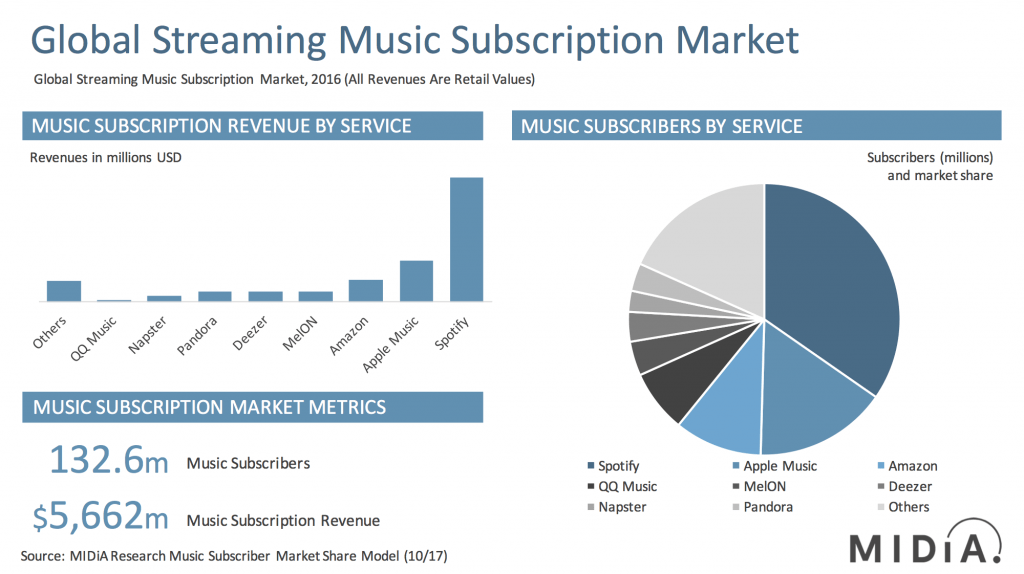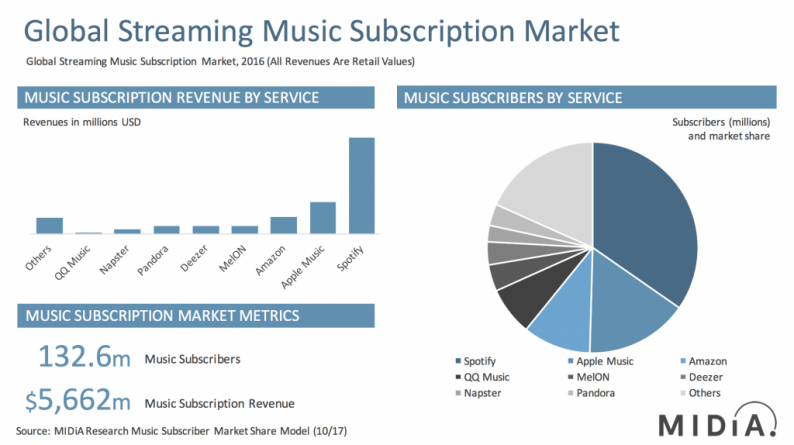According to the Recording Industry Association of America (RIAA), the US streaming music accounted for a majority of the retail music industry revenues. For the first half of 2017, retail revenues grew 17% to $4 billion, of which streaming services accounted for $2.5 billion and grew 48% over the year. Revenue from listeners paying to listen to streaming platforms like Spotify and Apple Music grew 61% over the year to $1.7 billion. Of this, $0.3 billion came from ad-supported on-demand options and $0.5 billion from listeners paying for radio services. About 30 million people in the country listen to a streaming music site.
Spotify’s Financials
According to another report from MiDia, Spotify leads the market with nearly 35% share in 2016. Apple Music came in second with a 16% market share.

Sweden-based Spotify was founded in 2006 by serial entrepreneur Daniel Ek and Martin Lorentzon. Its music streaming app was released in 2008. Like other streaming services, Spotify allows listeners to listen to digital music, create, share, and edit playlists and discover music based on recommendations. Over the past few years, Spotify has tied up with device manufacturers to allow gaming and streaming boxes to stream music through them. Currently, Spotify has 70 million subscribers around the world.
Spotify earns revenues through an ad-based and a subscription-based model. Users have the choice to listen to an ad-supported channel or can pay a $9.99 a month subscription fee to listen to ad-free music. The subscription also allows the listeners to download music to listen to it offline.
The rapid adoption of the service has translated into high revenue growth. Revenues for fiscal 2016 grew 52% to $3.5 billion. According to more recent reports, revenues are expected to grow another 40% in 2017 to €4.1 billion (~$4.9 billion). For the first half of 2017, revenues had come in at €1.9 billion (~$2.2 billion). High revenues have not, however, translated into profits. Spotify continues to spend significantly on royalty and distribution costs. Losses for 2017 are expected to decline to €200 million (~$231 million) from €557 million (~$660 million) in 2016.












Leave A Comment